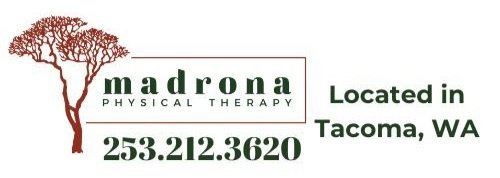Low Back Pain & Pelvic Floor Dysfunction
by Dr. Lacie Howell, PT, DT
Many women come to pelvic physical therapy to reduce urinary incontinence; however, we often hear women report having back pain as well. Research has demonstrated that 95% of people presenting to physical therapy with low back pain also have pelvic floor muscle dysfunction. Pelvic floor dysfunction is multifaceted that could include muscle weakness, urinary or fecal dysfunction, pelvic organ prolapses, or excessive muscle tension.
The most common finding with low back pain is tenderness of the pelvic muscles or overactivity of the pelvic floor, which may contribute to urinary urgency/frequency to void, and stress urinary incontinence.
The two most common patient presentations I tend to see that include low back pain are for dyspareunia (painful vaginal insertion) or postpartum urinary incontinence and weakness (or both).
Those who experience excessive muscle tension in the pelvic floor often complain of low back or hip pain, cramping, pain with intercourse, pain with tampon insertion, or pain with sitting. For this patient, we would focus on manual therapies to improve muscle tone, stretching into new range of motion, nervous system down-training (aka relaxing), and strengthening areas to reduce pelvic floor compensations leading to increased tone and back pain. It’s common that stress, poor sleep hygiene, and other social factors can also contribute to this type of lumbopelvic pain.
The other most common scenario is a postpartum mom being seen secondary to musculoskeletal changes. This can include lengthened and weakened abdominal muscles, weakened pelvic floor, and decreased coordination in the recruitment of our pelvic floor with daily activities. Postpartum women are suddenly experiencing new daily tasks which requires prolonged carrying and lifting of a baby.
Our main objective with this patient is to make the system work synergistically. Coordinating the pelvic floor, core, hip, and diaphragm muscles to fire appropriately and strongly. We address postural changes, daily habits, and movement patterns to help you feel your best with less pain, and reduce incontinence while caring for your babies.
If you are having low back pain and pelvic floor symptoms, Madrona PT can help you figure out your “why” and “what to do” so you can complete daily and recreational activities with less pain and worry!
Sources:
Keizer A, Vandyken B, Vandyken C, Yardley D, Macedo L, Kuspinar A, Fagahani N, Forget MJ, Dufour S. Predictors of Pelvic Floor Muscle Dysfunction Among Women With Lumbopelvic Pain. Phys Ther. 2019 Dec 16;99(12):1703-1711. doi: 10.1093/ptj/pzz124. PMID: 31504926.
Dufour S, Vandyken B, Forget MJ, Vandyken C. Association between lumbopelvic pain and pelvic floor dysfunction in women: a cross sectional study. Musculoskelet Sci Pract. 2018;34:47–53.
Dr. Lacie Howell, PT, DPT



